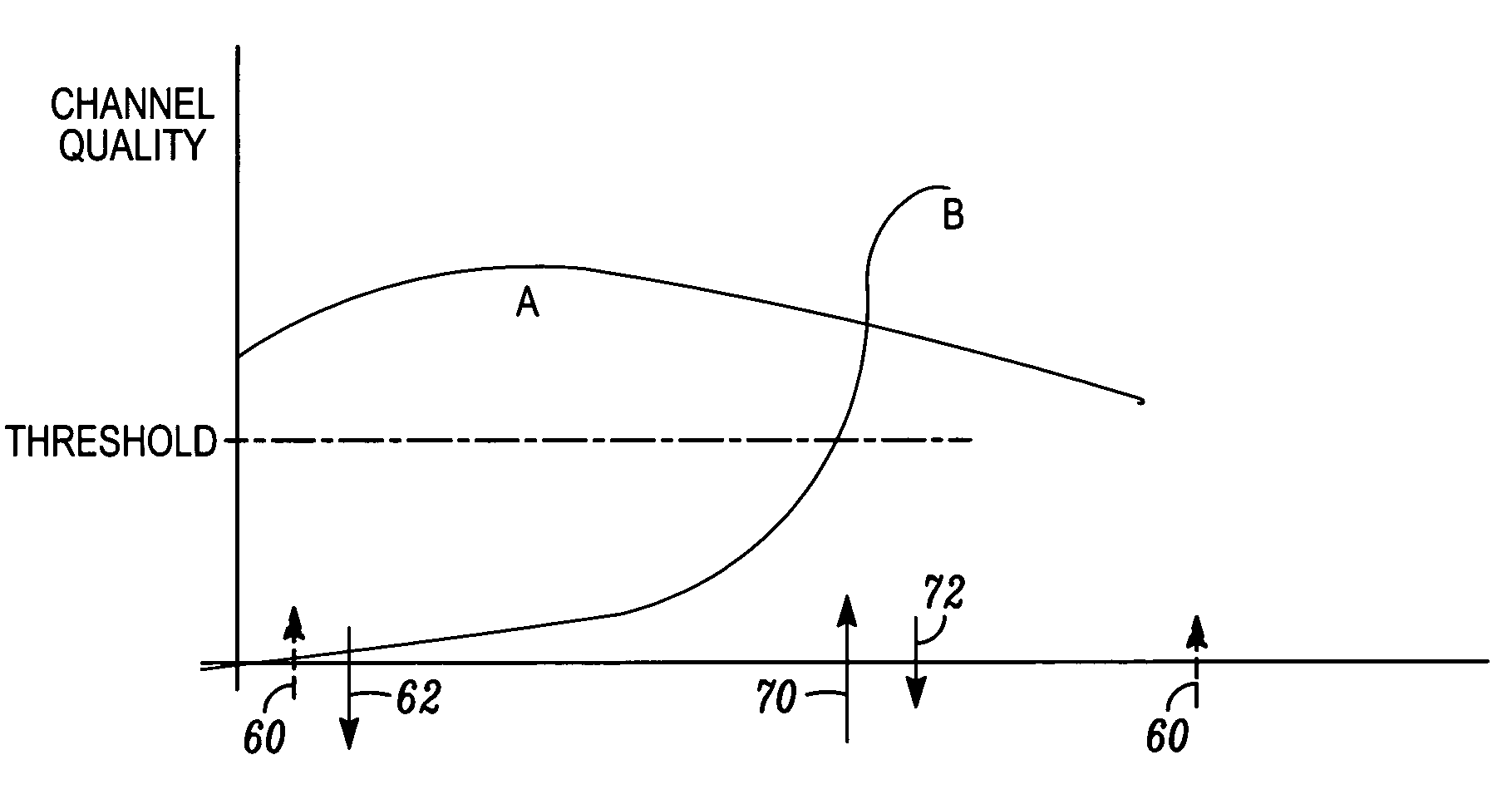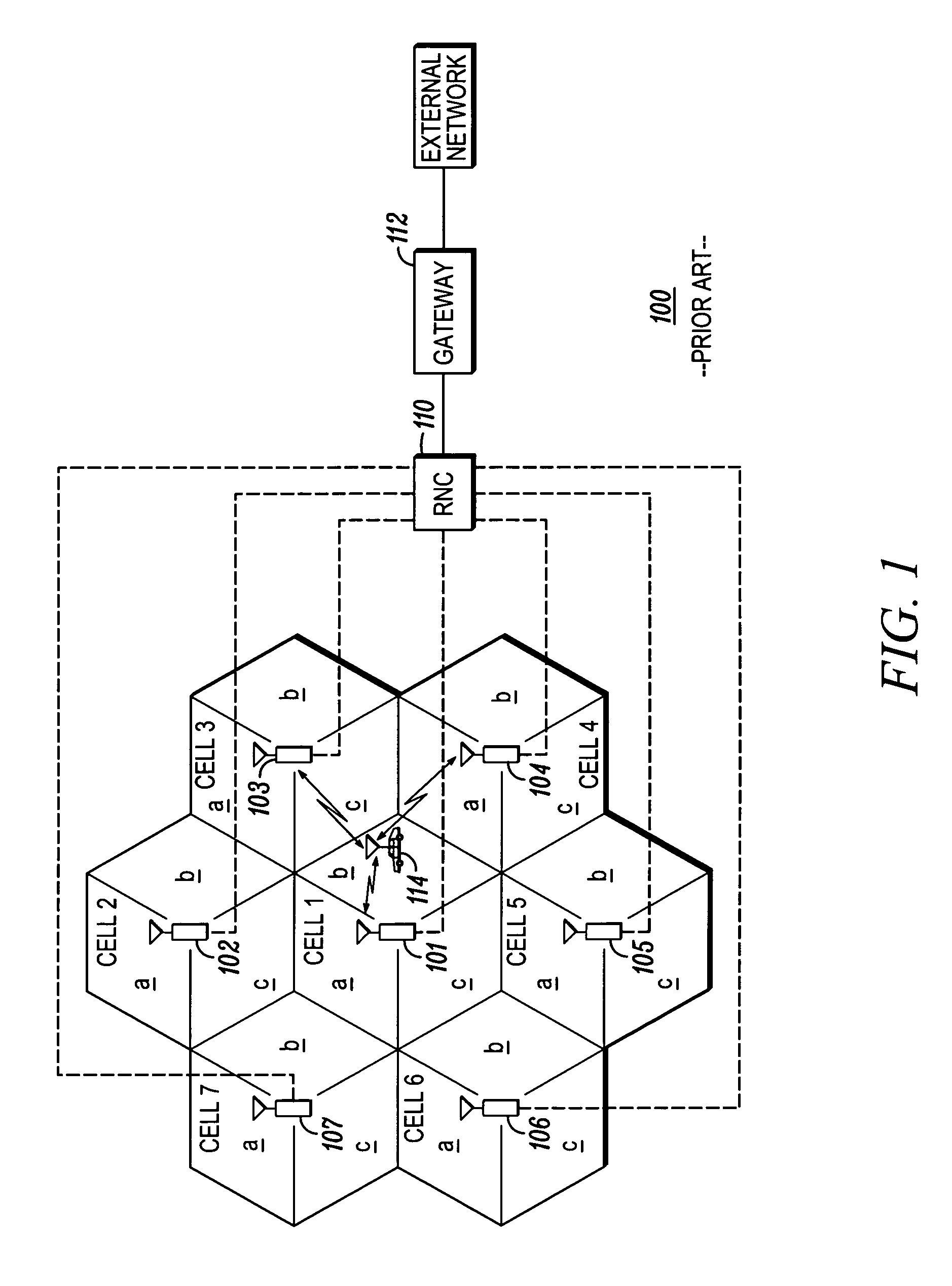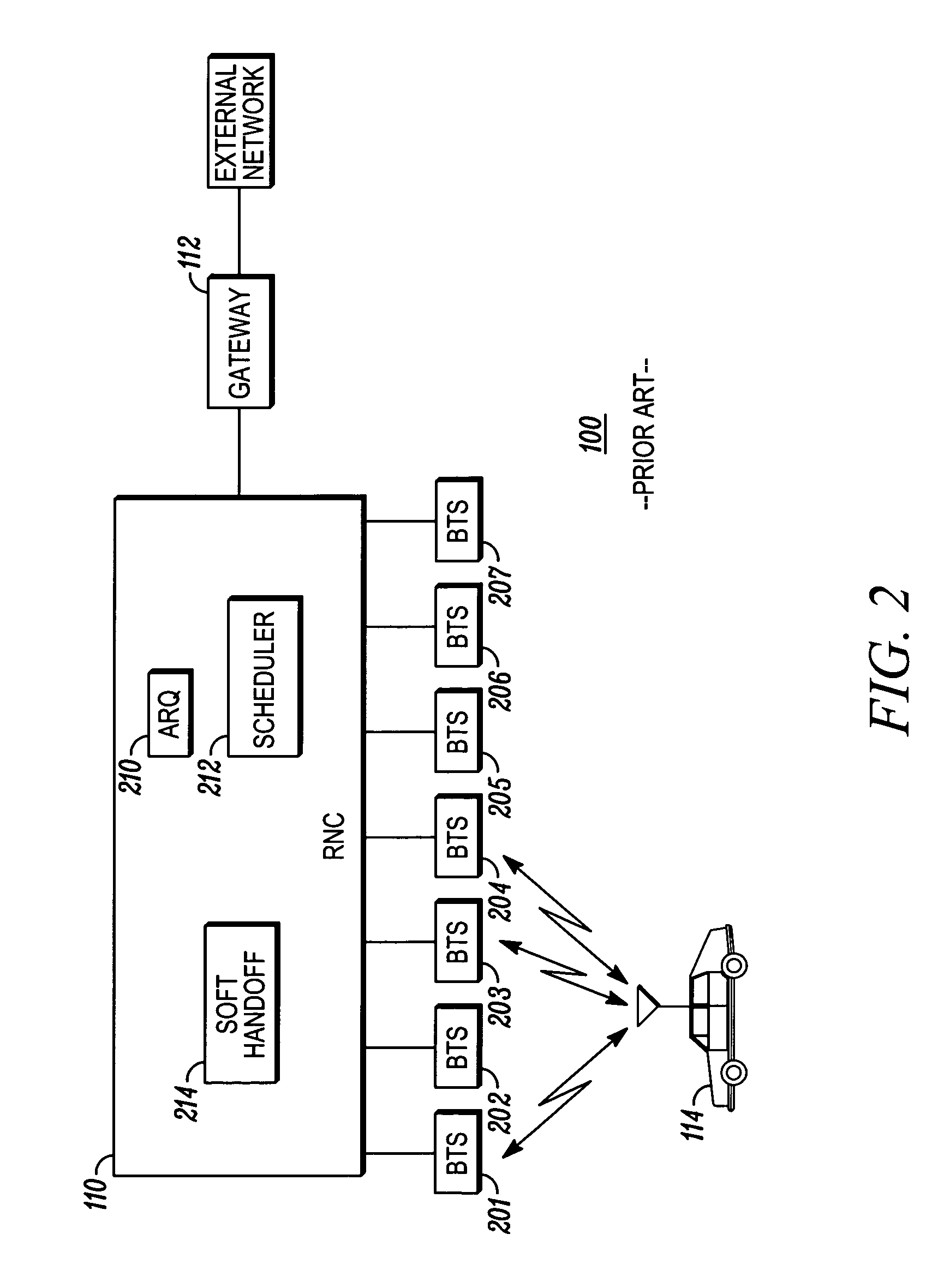Buffer occupancy used in uplink scheduling for a communication device
a communication device and buffer occupancy technology, applied in the field of wireless communication devices, can solve the problems of time synchronization of the base station not always readily accommodated, asynchronous transmissions are not without their own set of concerns, and problems such as site diversity
- Summary
- Abstract
- Description
- Claims
- Application Information
AI Technical Summary
Problems solved by technology
Method used
Image
Examples
Embodiment Construction
[0032]The present invention provides novel techniques to ensure that BTSs receive reliable buffer occupancy information, such that a macro selection diversity benefit is obtained. In one aspect of the present invention, time-stamping of the last transmission opportunity along with buffer occupancy is reported so that BTSs have the latest information that can assist it in ensuring a higher degree of fairness. Another aspect of the present invention provides the last known transmission opportunity to the BTS when first added to the active set of the mobile, since it is likely that this BTS may schedule the mobile early on, to help it initialize its fairness setting. Another aspect of the present invention transmits a buffer occupancy report when the mobile determines that a BTS has exceed a certain predetermined uplink channel quality and is therefore most likely to schedule the mobile. Additional information such as persistence of fading, speed, distance from BTS, etc., could be sent...
PUM
 Login to View More
Login to View More Abstract
Description
Claims
Application Information
 Login to View More
Login to View More - R&D
- Intellectual Property
- Life Sciences
- Materials
- Tech Scout
- Unparalleled Data Quality
- Higher Quality Content
- 60% Fewer Hallucinations
Browse by: Latest US Patents, China's latest patents, Technical Efficacy Thesaurus, Application Domain, Technology Topic, Popular Technical Reports.
© 2025 PatSnap. All rights reserved.Legal|Privacy policy|Modern Slavery Act Transparency Statement|Sitemap|About US| Contact US: help@patsnap.com



